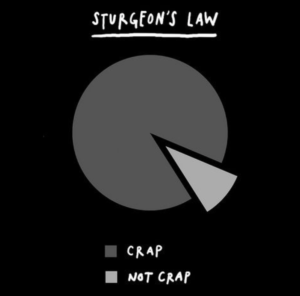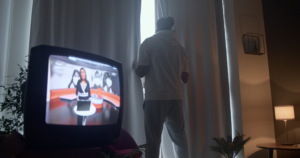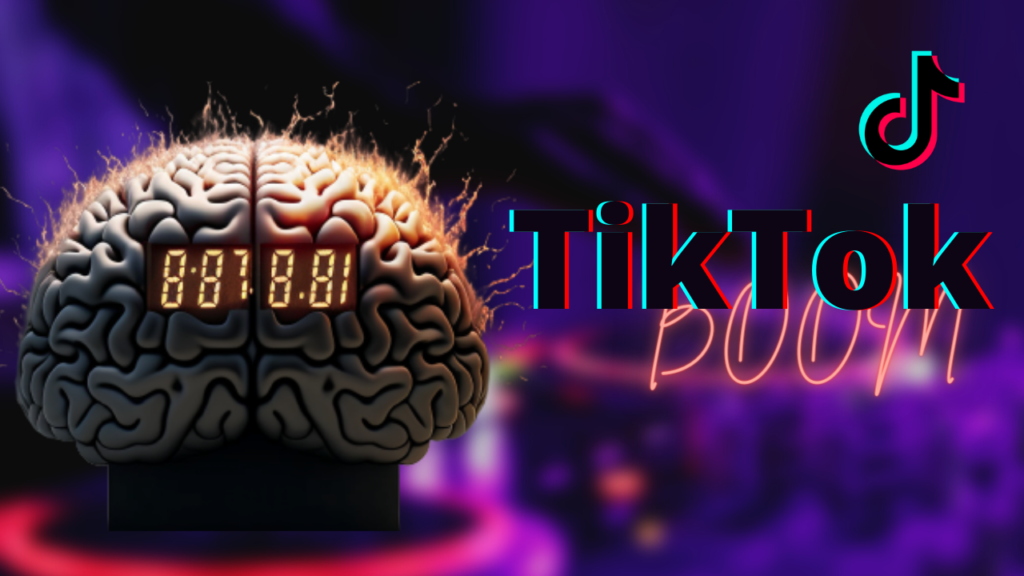TikTok: Silent Death of Your Brain Health
Dance videos, lip syncing and throw in some viral trends and you have: TikTok. A few key events in the right order had to happen for this little know platform to explode in popularity – so much so that the established tech giants (youtube and meta) had to restructure their platform just to stay relevant.
But behind the screen, young users find themselves in a dark place – brain fog, anxiety, Tourette’s syndrome, eating disorders, borderline personality disorder and multiple personality disorder.
In this video we will explore what happens to our brain on social media.
The rise of TikTok was engineered from a perfect storm. Pandemic induced fear and the increased isolation lead to the innocent hope of eliminating quarantine boredom. After all, why not have a dance and laugh while the world comes to an end?
Full disclaimer: I’m not on TikTok and refuse the scrolling behaviour regardless of the platform. I do however, post short-form content to prevent my own online extinction.
I will address this apparent contradiction in the redemption arc of this post.
Part1. The Elephant in the Room
Let’s start with the most enticing opportunity – we are being told that people’s attention span is getting shorter. Short form content means that you capture an audiences attention quickly, give them high value content or entertainment and you can do this with far more efficiency and engagement. Short form content solves for what was previously, the tedious task of going viral. And we get to discover so much more content in a short period of time.
There is however a cost to this convenience.
 The TikTok algorithm plays on Theodore Sturgeon’s Law that 90% of everything you watch is crap. You keep scrolling until you find that one content that gives you an emotional hit and then immediately fall back to the 90% of content, craving for the next emotional hit. This idea of discovering something new is more specifically an addiction running on the same algorithm as a gambling machine.
The TikTok algorithm plays on Theodore Sturgeon’s Law that 90% of everything you watch is crap. You keep scrolling until you find that one content that gives you an emotional hit and then immediately fall back to the 90% of content, craving for the next emotional hit. This idea of discovering something new is more specifically an addiction running on the same algorithm as a gambling machine.
The rapid context switching is not something the brain was designed for. It is the equivalent of having a conversation where we abruptly switch context mid-sentence every 3-8 seconds.
The hook required to reset your brain’s attention also numbs your brain and there is only so much spectacle that the brain can handle, before reality itself is diluted and we struggle to exist in the mundane.
We are being told, attention span is getting shorter so we must do short form content. No this is a HUGE mistake. We should instead be addressing the short attention span, not enabling it!! This is so glaringly obvious yet, no one wants to look at the elephant in the room.
Short form content has fractured people’s ability to hold information in working memory, which is the amount of information they can hold in their mind in real time. Attention not only targets what we focus on externally but observes how our thoughts are buffered live in our working memory. This is an essential part of being able to articulate thought and thinking critically.
The lack thereof, results in brain fog and a lapse in attention altogether where people blank out momentarily starring aimlessly for no reason. This is far from the extraordinary abilities that the human brain is capable off.
Part 2. Fictitious disorders
Before the Influencer, great inventors and entrepreneurs of the past worked away sometimes for decades without recognition or reward. They were often self-taught, self made and faced ongoing objection that they were up to no good, let alone contemplate how to do something that has never been done before. It is true that we spend our 20s trying to figure it out, our 30s doing what we figured out and our 40s benefiting from what we figured out. It does not always work out this way and follows extreme highs and lows that became defining moments in a person’s life.
Now however, the decades of dedication that requires an overwhelming will and strength of character has been replaced by spontaneous success. The TikTok algorithm solves for a fabricated desire – which is to go viral. In reality this is a false solution to loneliness and an elusive sense of belonging.
What of free will when an algorithm is deciding what means something to you?
It is hard to be professional, give people what they want and be yourself. This is something that I can’t simply overlook. It takes time for me to consolidate an idea, align it with my values and share something meaningful. It’s MUCH easier to simply report other peoples thoughts if you don’t have ideas or values of your own.
The avalanche of information make it difficult to filter: what is real and what is not.
The identity we create especially in our formative years becomes what we stand for later in life. While our identity is formulated by the virtues and preferences of the time. Today, short form content doesn’t provide nearly as much information to role model and creates underdeveloped personalities due to the lack of formative information.
Unlike the playground that provide a sandbox environment to test our sense of self, we have a culture that glorifies the self diagnosed and cancels anyone who refutes their dysfunction. To be clear, psychiatric disorders are themselves fabricated, let alone fictitious disorders made up for attention. For example, the acting in multiple personality disorders are so convincing that the actors themselves believe it to be real. It is futile to appear reputable when it is self-evident that psychology has become an instrument to facilitate this political agenda.
Yet it is undeniable that the prevalence of developmental conditions such Tourette syndrome is spontaneously spreading psychogenically, accumulating 6 Billion views on TikTok. The mass adoption of a rare genetic neurodevelopment disease that results from cortical thinning in the somatosensory and parietal cortices is particularly concerning. Not because we suddenly have a new brain disorder to worry about but rather, these psychogenic tics lack the neuroanatomical parallels found in actual Tourette syndrome.
Fictitious disorders have been trivialised for the sake of popularity, fitting in or finding a sense of belonging.
Actual Tourette syndrome typically affects boys between 5-7 years of age yet the psychogenic tics found on TikTok is majority female with a mean age of 18.8 years. In fact, many admit that they abruptly developed tic-like movements after watching another creator and now sell merchandise and profit from paid appearances despite 65% of their viewers believing their tics to be fake.
Part 3. The Redemption Arc
In our own lifetime we have seen the transition from a television screen, to a computer to mobile devices.
Kids of the 80s and 90s are the last of our kind to predate the internet.
Although we too went through our fair share of cultural transformation. I am guilty of begin the rebellious 90s EMO teenager turning into the 2000s health conscious Hipster.
There is no reversing the arrow of time and we have come a long way from stone age. However, people are getting wiser with how they choose to spend time on social media.
I personally grew up on a tropical island before the time of the internet. This traditional upbringing allowed me to foster genuine bonds with family, community and Nature. This connection is forged from a handful of people that we can count on. The reciprocity of trust and reliability demanded healthy and strong bonds between people. Beyond the fleeting gratification of followers that come and go.
I keep my own social media presence deliberate – investing more time creating content than consuming. In fact, the latest insights from Adobe’s “Future of Creativity” Study, shows that Content Creators benefit from the pleasure of sharing their work and improved mental health from the creative act of producing content. Is this the Redemption Arc that closes the Content Loop?
In reality, there are no easy or comfortable choices. I honestly don’t have a clear answer that would allow us to neatly navigate this volatile and morally questionable reality.
There are however steps that I take to ensure the lasting wellbeing and longevity of our Brain and Body. I share these long-form Neuroscientific Secrets on my Build your Brain Playlist linked here.

Use My Proven Nervous System Training Trusted by Busy Executives to Eliminate Anxiety Permanently!




